Or, How Our Maiden Voyage With Our Airstream Covered 1,250 miles in Three Days
After all our advance planning, after purchasing our Airstream travel trailer from a great (but distant) dealer, after finding exactly the right truck to tow the trailer, and after much consternation about learning to safely operate all these large items, it was finally time for the moment of truth. Over the 4th of July holiday week Ken drove the truck up to New Jersey — picking me up at the Philadelphia airport en route — and we returned to Colonial for our orientation and pickup, followed by the looooong journey back to South Florida.
Orientation Day
As expected, the staff at Colonial did an outstanding job of teaching us all the key points for the operation of the Airstream, as well as installing our weight-distributing hitch system on the trailer and our truck. Of course, the fact that we had literally spent dozens of hours researching Airstreams before our purchase made many of the features relatively familiar, but it was great to get some hands-on practice operating everything.
We also took the trailer to a nearby (empty) minor league baseball stadium to practice driving, turning, parking, and backing up in the wide open parking lot. There were several other people in cars marked “student driver” learning to parallel park and the like, and I was mildly envious of their tiny, maneuverable sedans. But a few hours of circling the parking lot gave us a lot more confidence in towing our large load.
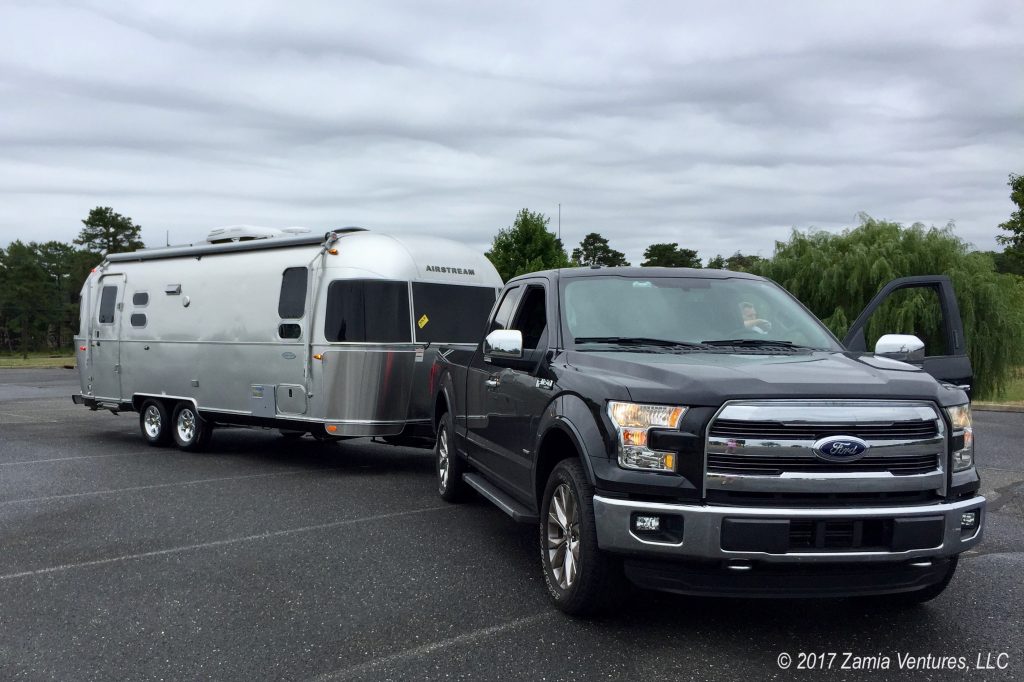
The only negative was the disconcertingly loud popping / grinding / moaning sounds coming from our hitch. We are not engineers, but we know the sound of mechanical items under severe strain. Needless to say we traveled back to Colonial very slowly, taking all the turns very gingerly, and immediately asked about the horrible sounds emanating from the hitch. We were relieved to hear that it is part of the normal function of the hitch system — its anti-sway features create mechanical obstacles to changing the angle of attachment to the truck, which manifest as loud noises when taking intentional turns.
We were certainly pleased to know that everything was in order, although not entirely excited to realize that we would be waking the dead every time we decided to take a turn. I’m also surprised that I didn’t encounter any mention of this “feature” during my endless product research.
But we are now more or less at peace with the fact that our hitch will be loudly proclaiming our arrival and departure at every location, and possibly leaving the uninitiated public concerned that our trailer is about to detach and squash them. I’ve concluded that the hitch is sort of like having a flatulent dog (not that I would know anything about that, ahem). It’s noticeable, mildly embarrassing, but also incredibly amusing.
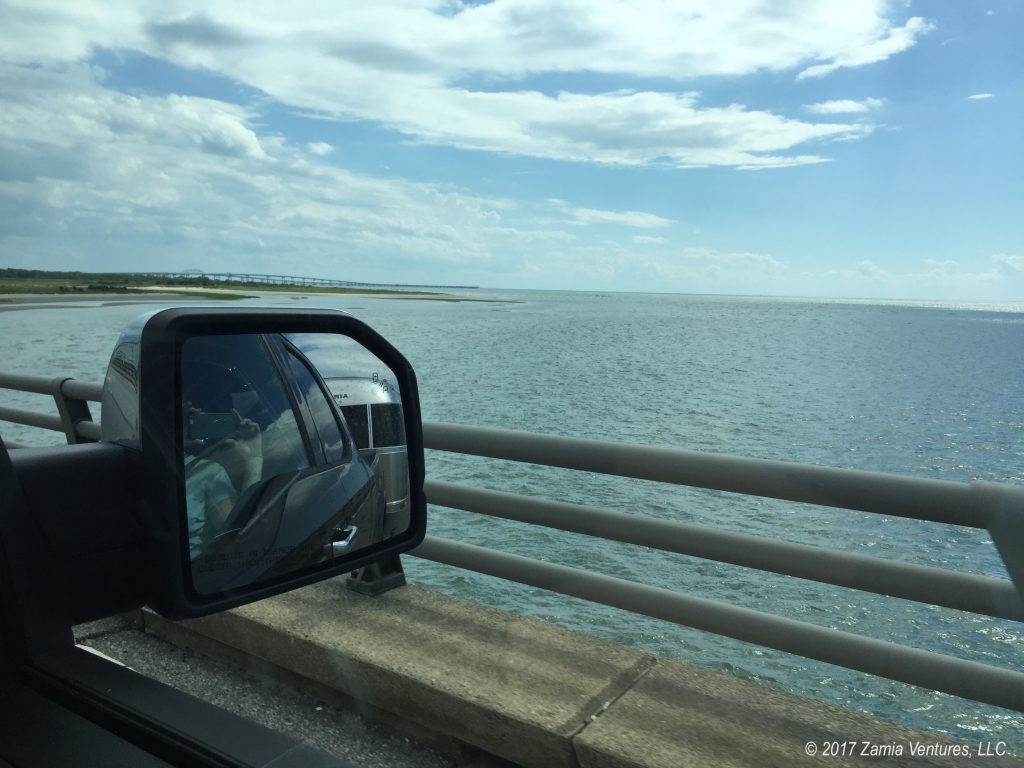
Travel Day 1
After an overnight stay on the Colonial property, we left bright and early in hopes of catching an early ferry from Cape May, NJ to Lewes, DE. So after only a few hours of practice with our massive new trailer — which the ferry folks kindly confirmed makes our full rig 46 feet from nose to tail — we headed down the road toward adventure.
We avoided the Garden State Parkway and instead took small back roads through southern New Jersey, which took us through heavily wooded areas and rural areas with agricultural activity. In other words, we traveled the scenic part of New Jersey no one believes actually exists. We happily arrived at the ferry without mishap in time for the crossing we wanted. The process of checking in and lining up (see photo at the top) was seamless, though I did have a little moment of shock when our substantial aggregate length was officially confirmed to us.
Ferry boarding was surprisingly easy, and our 85-minute crossing of the Delaware was uneventful though, thanks to the persistent fog, also not very scenic. One big obstacle was checked off. I took over driving in Delaware, and during my shift we covered the entire Delmarva Peninsula. That’s three states (Delaware, Maryland, and Virginia) in just a few hours — my usual ruthless efficiency at work.
At Cape Charles, VA we encountered yet another potentially challenging situation in the form of the Chesapeake Bay Bridge – Tunnel. The bridge part is fine, but hauling a large trailer through a narrow and steep tunnel is definitely anxiety-inducing, especially on our very first trip. Ken handled the bridge and tunnel crossing like a champ.
We then dealt with the challenges of hitting Norfolk, VA during Friday evening rush hour, which was yet another white knuckle experience. We were relieved when we finally exited the urbanized area and headed south along the Great Dismal Swamp. Our destination for the evening was a state park in eastern North Carolina, which offered an oasis of calm after a fairly challenging but exciting day. We were only disappointed that we didn’t have the time to explore any of the park’s amenities, since we were planning an early morning departure.
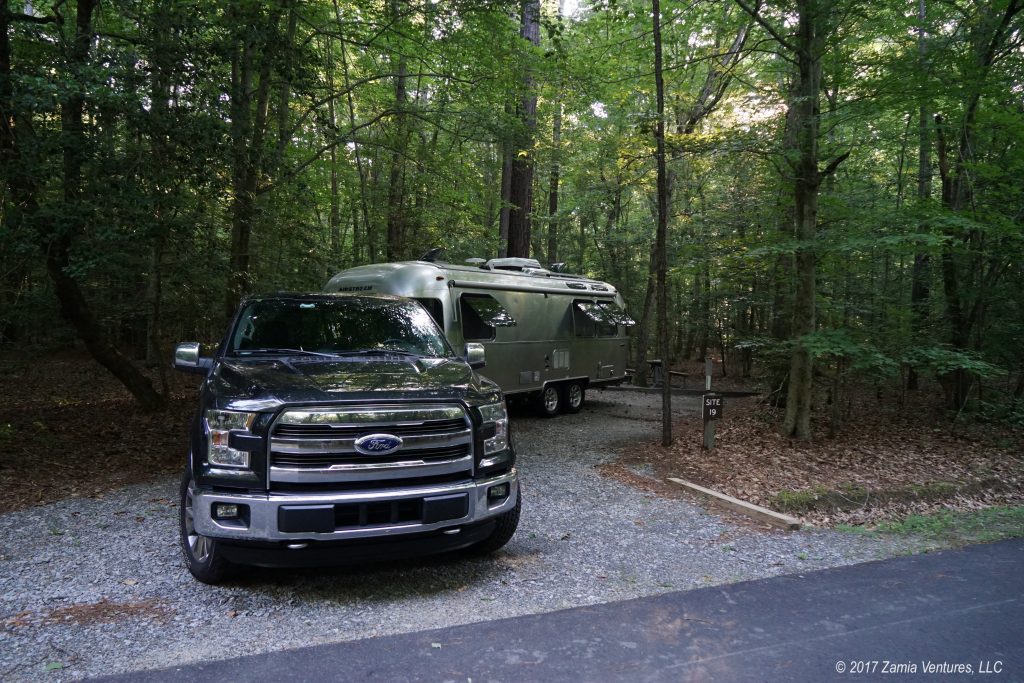
Travel Day 2
Our hitch likely roused a few zombies from slumber as we pulled out on the morning of day 2, but we didn’t mind because the campground was mostly empty and the day promised good weather.
At this point our navigation became significantly easier, as we only needed to travel two roads: US 158 West, then I95 South. It’s a good thing we didn’t need to refer to our phones for navigation assistance, as we discovered that northeastern North Carolina apparently has almost no cellular service, even along the main roadway. It’s not as if this area is unpopulated — we were driving through agricultural areas that were very obviously in cultivation, with small towns scattered throughout the area. It’s hard to believe that significant numbers of people living along the Eastern seaboard have yet to be reached by the cellular network, and this highlights a real divide in access and opportunity.
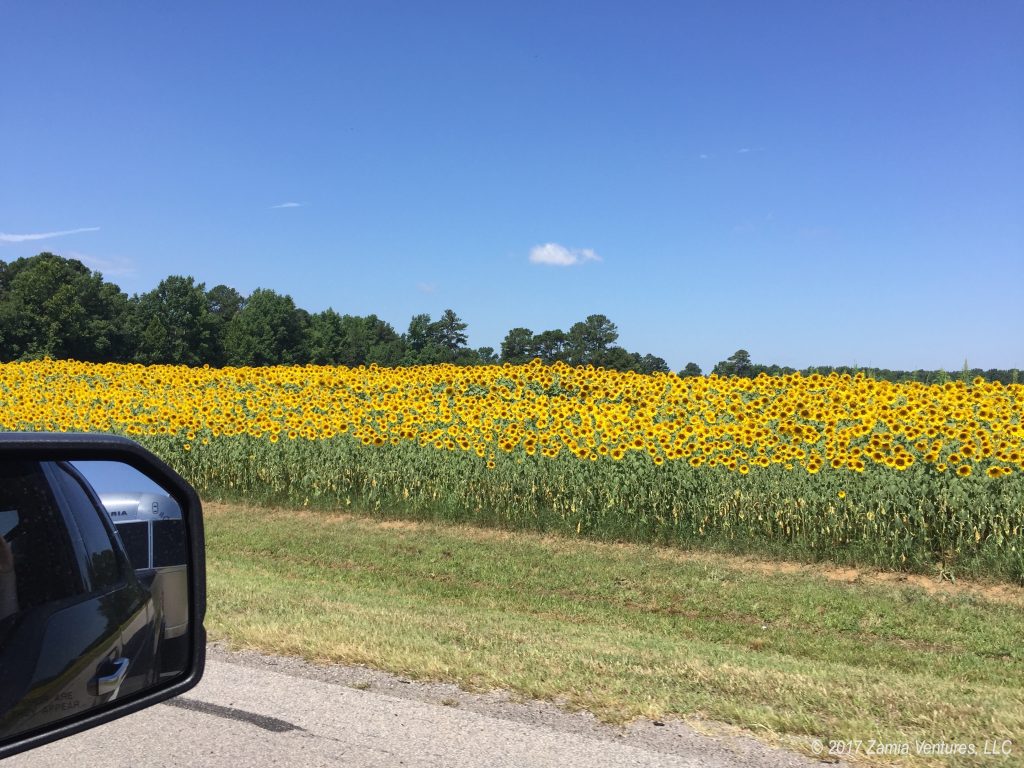
As an urban dweller, it’s difficult for me to imagine living without the internet in my pocket, bringing all the information in the world within easy reach. Of course, I do remember life before smart phones and realize that it is livable. But outside of my own frame of reference, it seems that people without cell service are missing out on things that would really improve their lives (and not just easy access to Yelp reviews). From what I understand, there are many ways that technology can improve agricultural results, from drones that fly over and inspect crops to fertilizing and harvesting machines that are autonomously driven using GPS. While I don’t know too much about the technology, I think many of these items are controlled by phone or tablet, so lack of access to a data network might put these devices out of reach for the farmers of eastern North Carolina.
Musing about life in rural North Carolina helped pass the time as we began the long and boring southward journey on I95. After a very long day of driving, changing drivers approximately every two hours, we made it to the very southern end of Georgia where we stopped at an RV park for the night. It was convenient and had what we needed but was not particularly scenic, so I took no photos.
Travel Day 3
Our final push on day three featured another early morning departure, in which we likely woke the whole campground when leaving. But I didn’t feel too bad, since the campground had resident roosters that would have performed the function anyway. The drive brought us through Jacksonville relatively early on a Sunday, and then down the Florida coast to home. Mostly, it was an opportunity to express (yet again) our surprise at what a long state we live in. It’s 375 straight and uneventful miles from the Georgia border to Miami.
During the drive we mostly rehashed our trip and expressed our genuine delight that things went so well. We had a lot of trepidation going in simply because we had no experience with towing or driving any sort of large vehicles. We weren’t sure how much mileage we could make, and we didn’t know how challenging it would be to maneuver the truck with the trailer attached. Surprisingly, there is no special license required to drive a 46 foot rig weighing up to 12,500 pounds, so we were total novices with zero training. Now, with over 1,000 miles of towing under our belts, I think we are a lot more comfortable.
Of course, we definitely need more practice, especially with backing up the trailer. We hope to take plenty of weekend trips in Florida — not involving days and days of driving — to get more experience with the use of the trailer and the whole rig. We have a few trips already planned, and more in the hopper.
Our final mileage tally for this trip:
Day 1: 339 miles (including 16 by ferry)
Day 2: 536 miles
Day 3: 384 miles
Wow! In the future, I don’t plan to travel such large distances in such a compressed time frame. It was pretty exhausting. Also, once the trailer is fully loaded with our belongings I am not certain we would want to travel at highway speeds, because of the extra weight and the issues with items jostling around in the trailer in transit. However, it’s good to know that we are capable of covering this sort of distance if the need ever arises. We are also really happy to have the Airstream safely parked in Florida, where we can start using and enjoying it. Stay tuned for tales of those adventures.
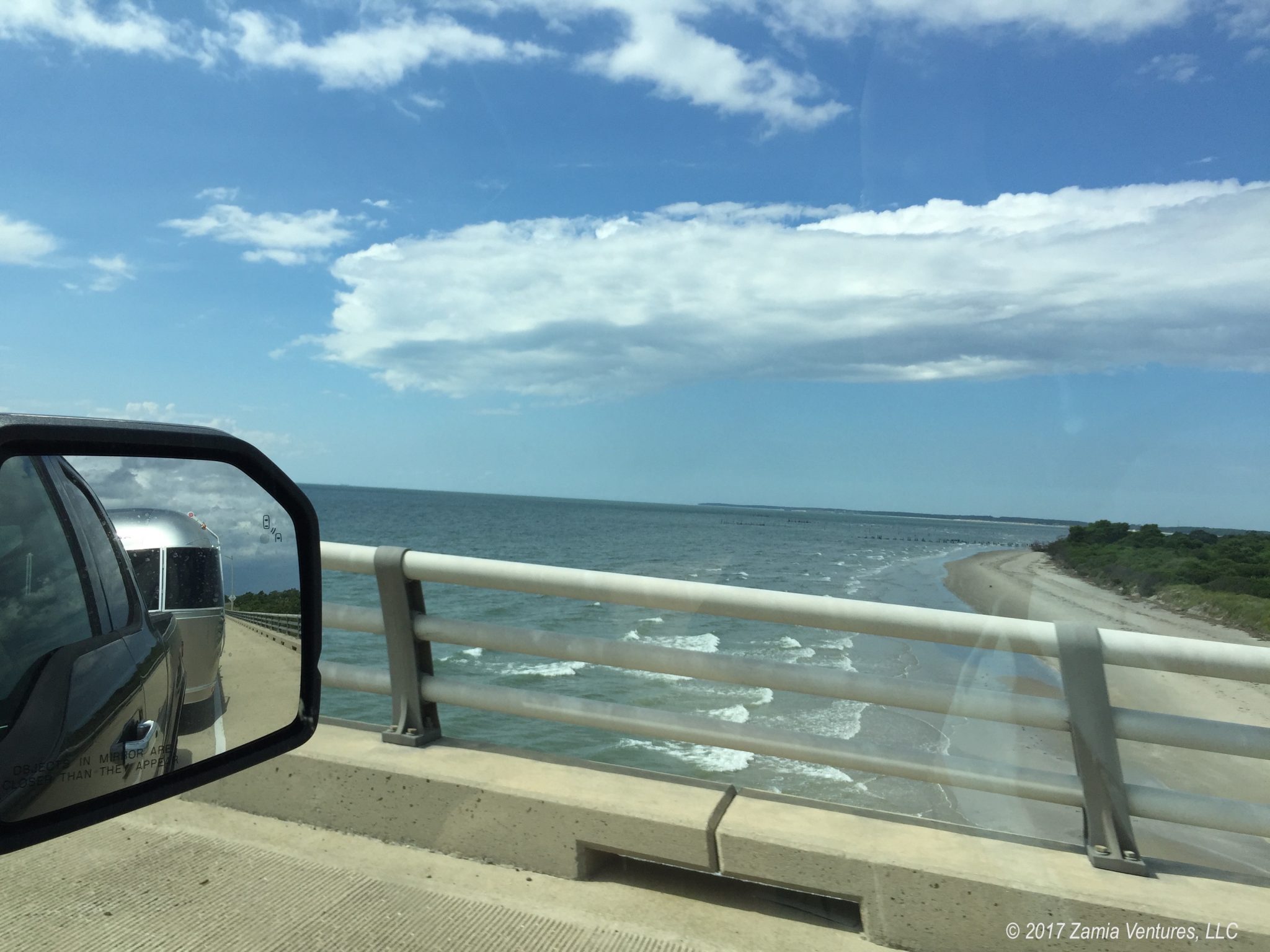
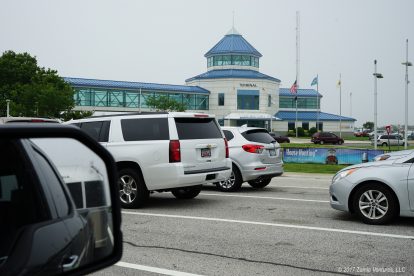
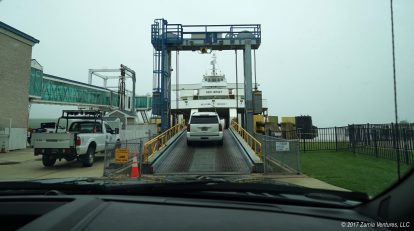
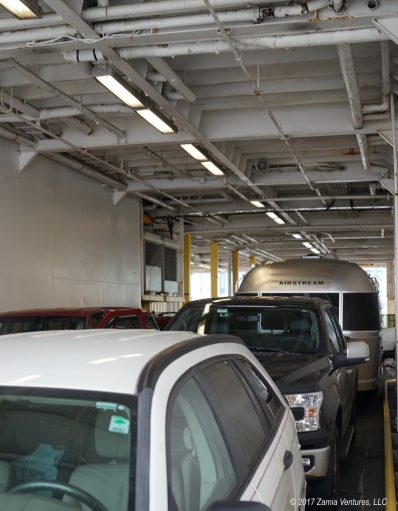
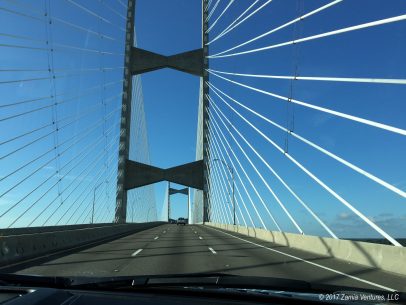
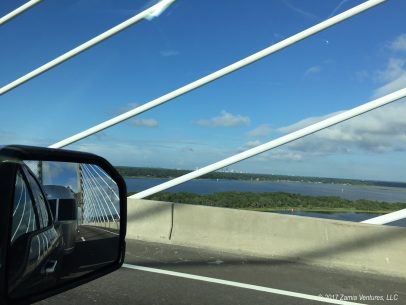
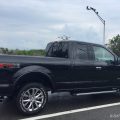
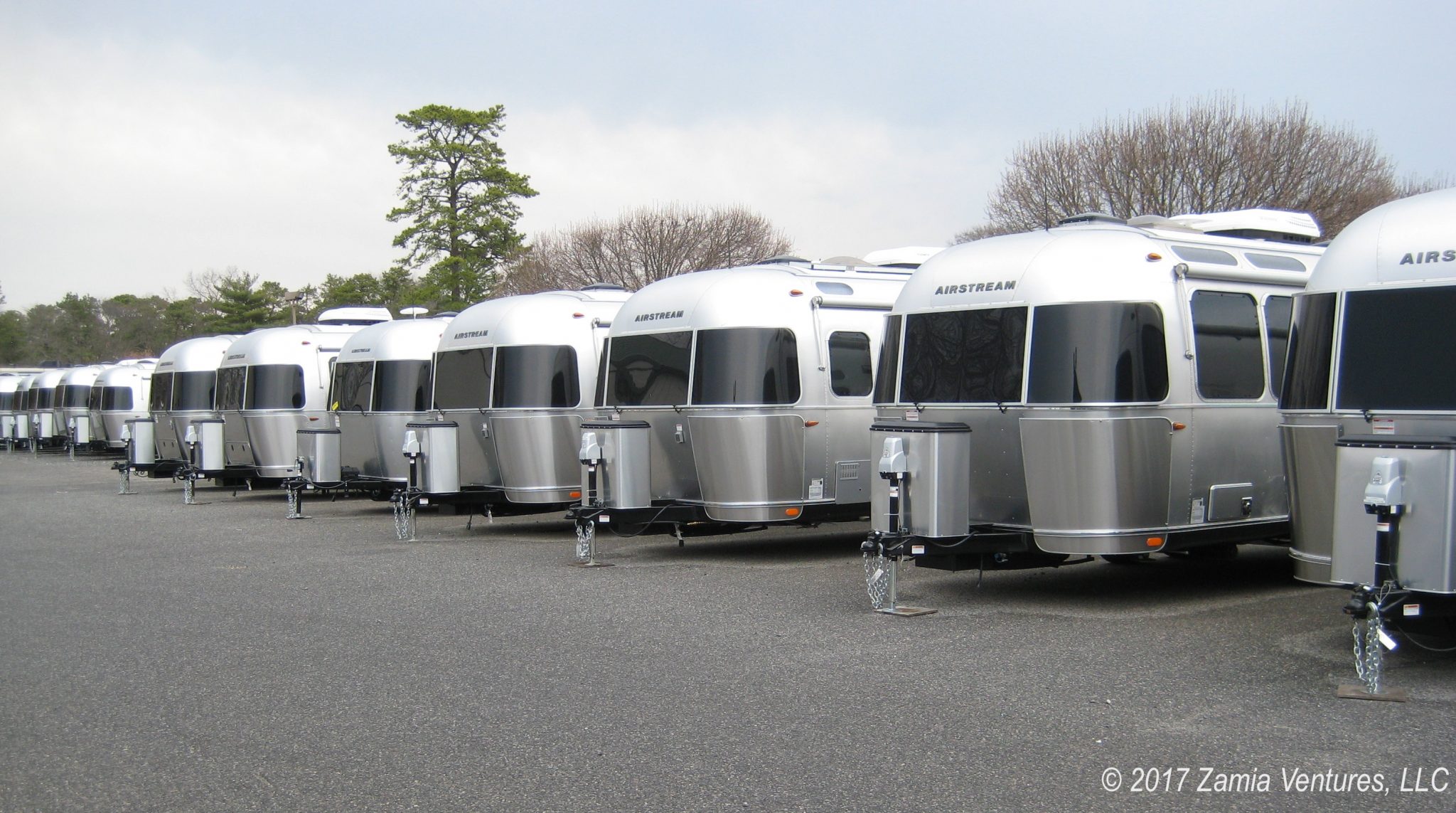
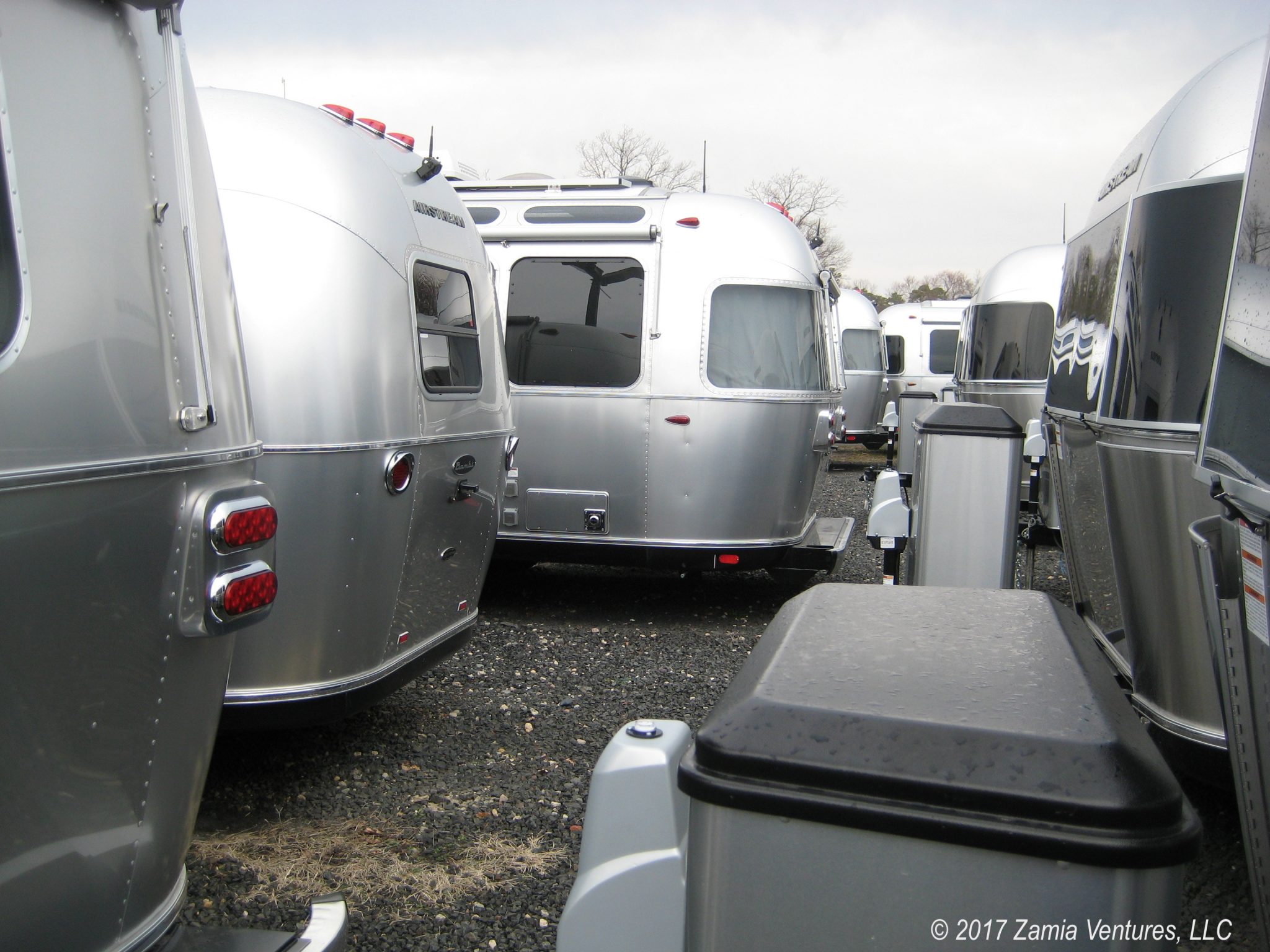
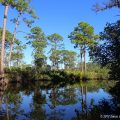
5 thoughts on “Ripping Off the Band-Aid”